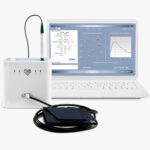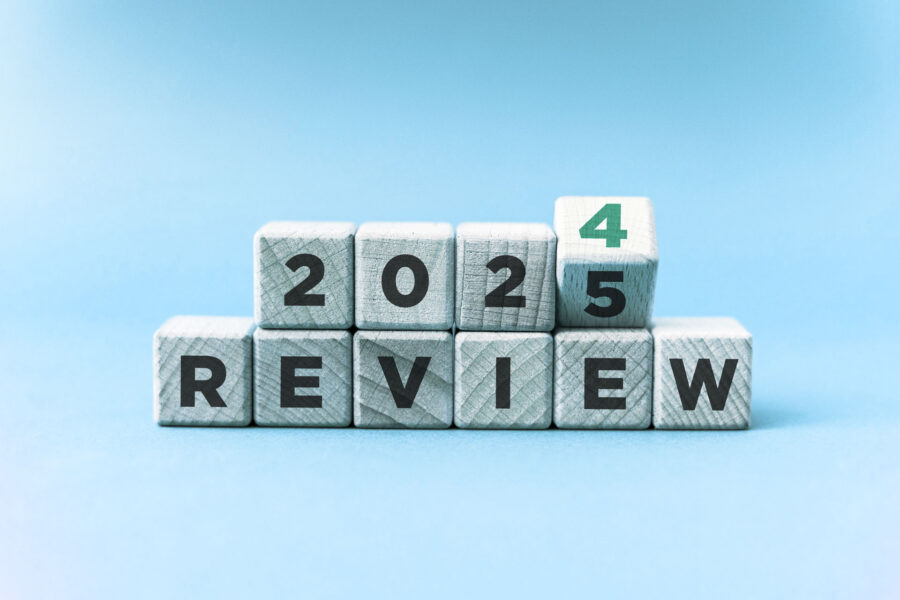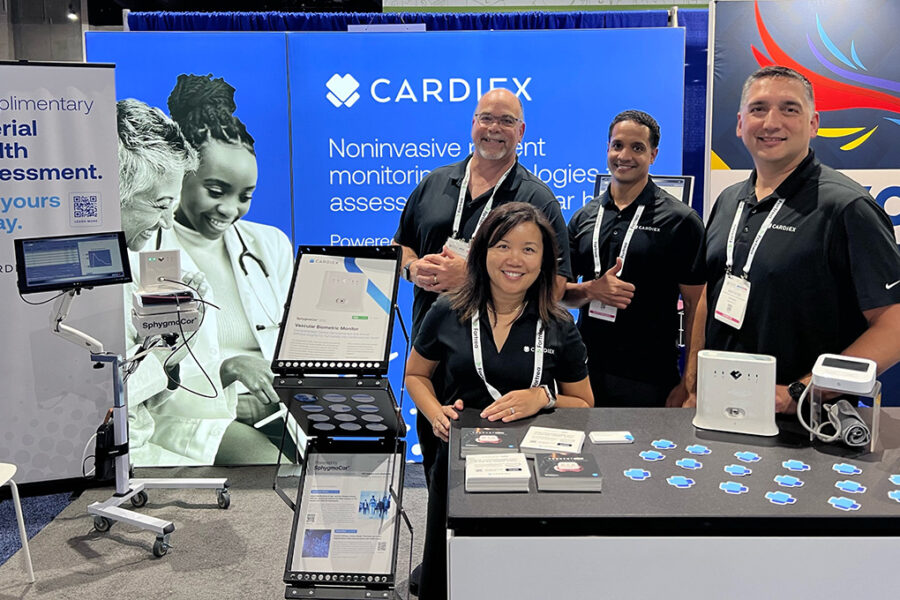
New Blood Pressure Guidelines and How To Control BP Naturally
May 7, 2019
What is SphygmoCor?
June 7, 2019Why 24-Hour Blood Pressure Control Matters
I believe it’s important to have your finger on the pulse of events and circumstances in your life, and your blood pressure is no exception. In fact, keeping a watchful eye on your blood pressure is essential, especially because hypertension doesn’t typically express symptoms and the first clue you have hypertension could be a most unwelcome event; say, a heart attack or stroke.
We often hear how important it is to get your blood pressure under control, but that’s only one part of the story. Taking your blood pressure once during a day gives you only a snapshot of your situation. In recent years, it’s become evident that monitoring the daily fluctuations in blood pressure patterns is very important, especially among older adults.(1,2)
In healthy individuals, blood pressure levels decline at night. These people are referred to as “dippers,” and the drop in pressure provides temporary relief from the continuous pounding endured by the blood vessels.(3)
Not everyone is a dipper, however. The blood vessels of so-called “non-dippers” don’t experience a decline in blood pressure during the night and so they don’t get any reprieve from the pounding.(3)
Therefore, non-dippers are at a higher risk of developing cardiovascular disease and of dying than their dipper friends, even if both groups have the same blood pressure during the day. Approximately one-third of adults with high blood pressure are non-dippers, which means they are always at a significant risk for a cardiovascular event.
It’s clear to me that we need to be more in turn with our blood pressure, and that includes getting a handle on both our day and nighttime pressures and establishing more ambitious target levels. To that end, in 2017 the American Heart Association and the American College of Cardiology recommended new blood pressure targets, with a goal of 130/80 mmHg, replacing the former 140/90 mmHg.(4)
However, there are some who advocate for even lower blood pressure figures of 120 mmHg or lower for the systolic number. In a 2015 study appearing in the New England Journal of Medicine, a scientific team evaluated 9,361 individuals with systolic blood pressure of 130 mmHg or higher and an increased risk of cardiovascular disease. The subjects were randomly assigned to either intensive treatment (target of less than 120 mmHg) or standard treatment (target less than 140 mmHg).(5)
Those in the intensive treatment group showed significantly lower all-cause mortality and other outcomes (e.g., heart attack, other acute coronary syndromes, heart failure, stroke, death from cardiovascular events). Mean systolic blood pressure in this group after one year of treatment was 121.4 mmHg compared with 136.2 mmHg in the standard treatment group.
Overall, the study results indicated that many people have been living with a false sense of security, believing that a target of 140/90 or 130/80 mmHg will significantly reduce their risk of cardiovascular disease and death.
Not so.
Add to this the fact that natural fluctuations in blood pressure during the day and night, especially among non-dippers, places many people at increased risk of a cardiovascular event. Typically, doctors try to successfully manage blood pressure by prescribing different drug classes of medications at low doses rather than stick with one drug at a high dose. The treatment approach can help reduce the occurrence of side effects that often occur when taking a high dose of a single drug.
Basics of blood pressure
If you want to lower your blood pressure, there are three basic approaches you can take. One is lifestyle changes, including weight loss if extra pounds are an issue, along with a regular exercise regimen. A healthy, heart-friendly diet—DASH and the Mediterranean diet come to mind–also should be part of the mix.
At-home 24-hour blood pressure monitoring is recommended to help identify fluctuations and how well you progress in your efforts to bring your pressures down. Today there are low-cost at-home blood pressure monitors available that can make this task convenient.
The third approach is the use of blood pressure lowering medications. The main complaint about antihypertensive medications is the side effects. Truth be told, the adverse effects associated with the older drug classes of diuretics and beta-blockers can result in poor patient compliance. When patients don’t take their blood pressure meds as prescribed, blood pressure can easily get out of control.
The introduction of newer classes of antihypertensive drugs such as angiotensin II receptor blockers (ARBs; e.g., candesartan, losartan, olmesartan) has been accompanied by better tolerance and compliance. Some patients can achieve good blood pressure control using a single ARB drug, such as telmisartan, once a day. Generally, however, it is best to control high blood pressure using low doses of several different classes of medications.
Natural blood pressure treatment approaches
A growing number of experts are recommending that individuals work to achieve a systolic blood pressure lower than 120 mmHg. To make that possible, patients may consider using natural compounds, in addition to or instead of, prescription medications. Although use of prescription medications currently is the main treatment approach, each natural supplement has a different way of working and can provide significant complementary support.
Among the natural products that have scientific evidence demonstrating their ability to lower systolic blood pressure are the flavonoids myricetin and quercetin.(6) These substances block a receptor for the hormone that can raise blood pressure.
The hormone melatonin, available as a supplement, can provide blood pressure control overnight as well as during the day when taken in a time-release formulation.
Another natural substance, stevioside, has antihypertensive properties similar to those of prescription calcium channel-blocking drugs such as amlopidine, diltiazem, nicardipine, and verapamil. Stevioside relaxes the blood vessels, which promotes better blood flow.
Each of these natural compounds works engages several clinically proven mechanisms to control blood pressure twenty-four hours a day. Let’s explore each substance individually.
Blocking angiotensin II
Angiotensin II is a hormone that causes arteries to constrict, which results in a rise in blood pressure. Some experimental research has indicated that myricetin and quercetin have an ability to block angiotensin II receptors, which they do by binding to the receptor.(7) Here are a few studies that illustrate the abilities of these natural compounds.
- In a rat study, myricetin inhibited the contraction of the arteries in response to angiotensin by 43 percent compared with the natural condition. This response resulted in a significant decline in systolic blood pressure in the animals with hypertension.(11)
- More importantly, several clinical trials in both healthy and overweight/obese individuals have shown that quercetin and myricitrin can effectively lower blood pressure at a dose of 150 mg daily.(12,13)
- In overweight or obese people with prehypertension and early hypertension, 162 mg daily of quercetin effectively lowered systolic blood pressure by 3.9 mmHg when compared with placebo.(14)
- Quercetin at a dose of 730 mg daily reduced both systolic (7 mmHg) and diastolic (5 mmHg) blood pressure in men and women with prehypertension or early hypertension in another study. (15)
People with diabetes are especially at risk for cardiovascular events, so lowering blood pressure is critical. Both quercetin and myricitrin have demonstrated benefits here as well. For example:
- A dose of 500 mg daily of quercetin lowered systolic pressure by 5.3 mmHg compared with placebo in women with type 2 diabetes (16)
- A 600-mg dose of myricitrin extract resulted in a 11 mmHg decline in systolic blood pressure compared with baseline in patients with type 2 diabetes (17)
In addition to being available in supplement form, the flavonoids quercetin and myricitrin are found in small amounts in some plant foods, such as spinach and other green leafy vegetables, cauliflower, strawberries, other berries, and soft fruits. (18)
It’s worth noting that along with helping control hypertension, angiotensin receptor blockers also can boost insulin sensitivity, improve the function of the mitochondria (which can result in better energy), and increase the body’s use of fat as energy, which can contribute to weight loss. (8-10)
Natural calcium-channel blockers
In the natural calcium-channel blocker department, stevioside has gained recognition. This molecule is derived from the leaves of Stevia rebaudiana, which you may recognize as a natural non-caloric sweetener.
However, stevioside also has an ability to block calcium channels in the smooth muscle of your arteries. (19-21) This is important because when calcium levels inside your cells are elevated your cells constrict, which in turn causes your arteries to become narrow and blood pressure to rise. Blocking calcium channels, therefore, can bring blood pressure down.
Doctors often turn to a two-punch to lower blood pressure by prescribing calcium channel blockers along with angiotensin II receptor blockers. A similar approach is to use stevioside along with flavonoids.
An example of how stevioside can lower blood pressure was shown in a University of Oxford review and meta-analysis that involved nine studies and 788 patients. The participants took doses of stevioside ranging from 750 to 1,500 mg daily. Among those who took the supplement for one year or longer, the mean decline in systolic blood pressure was 11.9 mmHg. The authors of the review also saw a significant decline in diastolic blood pressure and fasting blood glucose levels.(22)
Blood pressure recommendations for aging adults
- Despite the blood pressure guidelines from the American Heart Association and the American College of Cardiology of 130/80 mmHg, some experts say individuals should aim for less than 120/80; for example, 115/75 mmHg.
- At the same time, older adults who have a history of hypertension and/or coronary artery disease and/or kidney disease or who are older than 80 should not take actions that will quickly lower their blood pressure. If they do, they may experience dizziness, lightheadedness when standing from a seated position, worsening kidney function, and increasing problems with cognitive functioning.
- Among elderly, frail individuals, a blood pressure of 115/75 mmHg may not be tolerable because they their vascular system has sustained prolonged damage. These individuals should work with their physician to determine the lowest blood pressure they can safely tolerate.
- Anyone who embarks on an aggressive blood pressure control plan should have their kidney function checked periodically. A simple blood test can check biomarkers such as creatinine and BUN, two different waste products whose levels can indicate how well the kidneys are functioning and clearing waste from the body.
- Individuals should invest in a low-cost at-home blood pressure monitor so they can keep an eye on their pressure on a regular basis, but especially when they are trying new medications or supplements.
How to control nighttime blood pressure
Remember when we talked about dippers and non-dippers? It’s not enough to simply lower high blood pressure; you also need to ensure your pressure maintains a healthy level around the clock and especially at night.
The hormone melatonin is most often associated with sleep cycles and circadian rhythm, but it also has a key role in reducing nighttime blood pressure. (23-25) If you are among the 35 percent of non-dippers with hypertension, understanding how melatonin can help you is essential.
Here’s how melatonin works with blood pressure. Melatonin receptors lower blood pressure in two ways: by dilating the blood vessels and by interfering with signals that are sent from the sympathetic nervous system, which is intimately involved with blood pressure regulation. (26,27)
In animals studies, melatonin has lowered elevated blood pressure brought on by high-fat and high-salt diets while also providing protection to the body’s organs against the damaging effects of prolonged hypertension.(28-30)
Scientists have found, however, that the type of melatonin supplement you take makes a difference when it comes to blood pressure control, especially a night. For example, in one meta-analysis involving 211 individuals, the effects of immediate-release (5 mg daily) and controlled-release (2-3 mg daily) melatonin supplements were evaluated.(24) The findings were as follows:
- Controlled-release melatonin was most effective at controlling blood pressure during the night
- Controlled-release melatonin lowered systolic blood pressure by an average of 6.1 mmHg while immediate-release melatonin caused a 0.3 mmHg reduction
- Controlled-release melatonin reduced diastolic blood pressure by an average of 3.5 mmHg compared with 0.2 mmHg with immediate-release formulation
Summary
- Approximately 75 million Americans have hypertension (140/90 mmHg or higher, as defined by mainstream medicine), also known as the “silent killer” because it typically produces no symptoms yet causes severe and often irreversible damage to blood vessels and organs (32,33)
- An additional one in three American adults have prehypertension, which is clinically defined as 120/80 mmHg to 130/89 mmHg (32-34)
- Only about half of people with hypertension have their disease under control (31) Because the percentage of people with prehypertension is said to be from 25 percent to 50 percent of the population, the actual number of people with serious high blood pressure is likely much higher.
- Research supports a target systolic blood pressure of less than 120 mmHg, which is significantly lower than the latest ACC/AHA recommendation of 130 mmHg.
- Several natural compounds have demonstrated an ability to help lower blood pressure in ways similar to those of angiotensin II receptor inhibitors and calcium channel blockers. Those compounds include quercetin, myricetin, and stevioside. Melatonin, when taken in a controlled-release formulation, provides blood pressure protection during the night.
- Use of natural supplements can be an effective part of your plan to better manage blood pressure 24 hours a day.
References
- Elliott HL. 24-hour blood pressure control: its relevance to cardiovascular outcomes and the importance of long-acting antihypertensive drugs. Journal of Human Hypertension 2004; 18(8):539-43.
- Pierdomenico SD et al. Circadian blood pressure changes and cardiovascular risk in elderly-treated hypertensive patients. Hypertension Research 2016.
- Verdecchia P et al. Dippers versus non-dippers. Journal of Hypertension Supplement 1991; 9(8):S42-44.
- American College of Cardiology. New ACC/AHA high blood pressure guidelines lower definition of hypertension. 2017 Nov 13
- Sprint Research Group et al. A randomized trial of intensive versus standard blood-pressure control. New England Journal of Medicine 2015; 373(22):2103-16.
- Maaliki D et al. Flavonoids in hypertension: a brief review of the underlying mechanisms. Current Opinions in Pharmacology 2019 May 15; 45:57-65
- Laskar MA, Choudhury MD. In silico screening of some plant based natural products as angiotensin receptor blockers against cardiovascular diseases. World Journal of Pharmacy and Pharmaceutical Science. 2015; 4(1):1248-57.
- Kurokawa H et al. Telmisartan enhances mitochondrial activity and alters cellular functions in human coronary artery endothelial cells via AMP-activated protein kinase pathway. Atherosclerosis 2015; 239(2):375-85.
- Shiota A et al. Telmisartan ameliorates insulin sensitivity by activating the AMPK/SIRT1 pathway in skeletal muscle of obese db/db mice. Cardiovascular Diabetology 2012; 11:139.
- Sugimoto K et al. Telmisartan increases fatty acid oxidation in skeletal muscle through a peroxisome proliferator-activated receptor-gamma dependent pathway. Journal of Hypertension 2008; 26(6):1209-15.
- Godse S et al. Effect of myricetin on blood pressure and metabolic alterations in fructose hypertensive rats. Pharmaceutical Biology 2010; 48(5):494-98.
- Pfeuffer M et al. Effect of quercetin on traits of the metabolic syndrome, endothelial function and inflammation in men with different APOE isoforms. Nutrition, Metabolism and Cardiovascular Disease 2013; 23(5):403-9.
- Egert S et al. Quercetin reduces systolic blood pressure and plasma oxidised low-density lipoprotein concentrations in overweight subjects with a high-cardiovascular disease risk phenotype: a double-blinded, placebo-controlled cross-over study. British Journal of Nutrition 2009; 102(7):1065-74.
- Brull V et al. Effects of a quercetin-rich onion skin extract on 24 h ambulatory blood pressure and endothelial function in overweight-to-obese patients with (pre-)hypertension: a randomised double-blinded placebo-controlled cross-over trial. British Journal of Nutrition 2015; 114(8):1263-77.
- Edwards RL et al. Quercetin reduces blood pressure in hypertensive subjects. Journal of Nutrition 2007; 137(11):2405-11.
- Zahedi M et al. Does quercetin improve cardiovascular risk factors and inflammatory biomarkers in women with type 2 diabetes: A double-blind randomized controlled clinical trial. International Journal of Preventive Medicine 2013; 4(7):777-85.
- Sales DS et al. Eugenia punicifolia (Kunth) DC. as an adjuvant treatment for type-2 diabetes mellitus: a non-controlled, pilot study. Phytotherapy Research 2014; 28(12):1816-21.
- Sultana B, Anwar F. Flavonols (kaempeferol, quercetin, myricetin) contents of selected fruits, vegetables and medicinal plants. Food Chemistry 2008 Jun 1; 108(3): 879-84
- Melis MS. Influence of calcium on the blood pressure and renal effects of stevioside. Brazilian Journal of Medical and Biological Research 1992; 25(9):943-49.
- Melis MS, Sainati AR. Effect of calcium and verapamil on renal function of rats during treatment with stevioside. Journal of Ethnopharmacology 1991; 33(3):257-62.
- Liu JC et al. Mechanism of the antihypertensive effect of stevioside in anesthetized dogs. Pharmacology. 2003; 67(1):14-20.
- Onakpoya IJ, Heneghan CJ. Effect of the natural sweetener, steviol glycoside, on cardiovascular risk factors: a systematic review and meta-analysis of randomised clinical trials. European Journal of Preventive Cardiology 2015; 22(12):1575-87.
- Cicero AF, Colletti A. Nutraceuticals and blood pressure control: Results from clinical trials and meta-analyses. High Blood Pressure & Cardiovascular Prevention 2015; 22(3):203-13.
- Grossman E et al. Effect of melatonin on nocturnal blood pressure: meta-analysis of randomized controlled trials. Vascular Health Risk Management 2011; 7:577-84.
- Altun A, Ugur-Altun B. Melatonin: therapeutic and clinical utilization. International Journal of Clinical Practice 2007; 61(5):835-45.
- Pechanova O et al. Peripheral and central effects of melatonin on blood pressure regulation. International Journal of Molecular Science 2014; 15(10):17920-37.
- Mutoh T et al. Melatonin modulates the light-induced sympathoexcitation and vagal suppression with participation of the suprachiasmatic nucleus in mice. Journal of Physiology 2003; 547(Pt 1):317-32.
- Leibowitz A, Volkov A, Voloshin K, et al. Melatonin prevents kidney injury in a high salt diet-induced hypertension model by decreasing oxidative stress. Journal of Pineal Research 2016; 60(1):48-54.
- Qiao YF et al. Melatonin attenuates hypertension-induced renal injury partially through inhibiting oxidative stress in rats. Molecular Medicine Reports 2016; 13(1):21-6.
- Cano Barquilla P et al. Melatonin normalizes clinical and biochemical parameters of mild inflammation in diet-induced metabolic syndrome in rats. Journal of Pineal Research 2014; 57(3):280-90.
- Centers for Disease Control and Prevention. Blood pressure. Accessed May 30, 2019.
- Centers for Disease Control and Prevention. High blood pressure facts. Accessed May 30, 2019.
- Centers for Disease Control and Prevention. Measuring blood pressure. Accessed May 30, 2019.
- Huang Y et al. Prehypertension and incidence of cardiovascular disease: a meta-analysis. BMC Medicine 2013;11:177.



